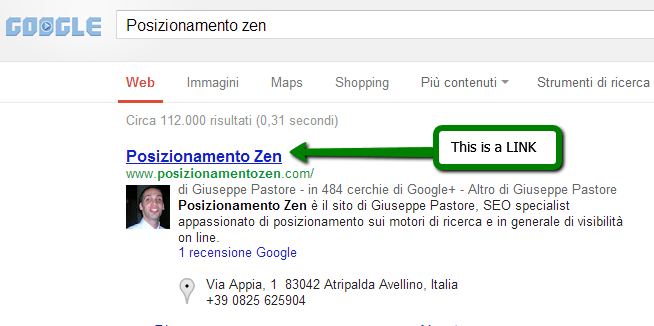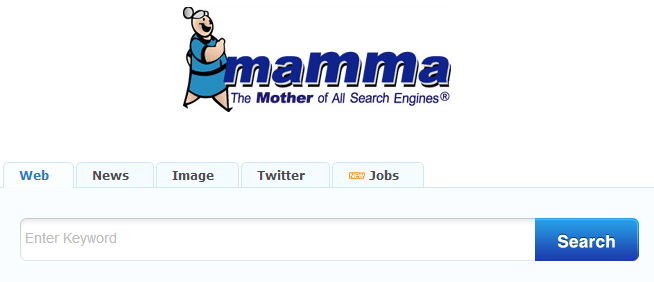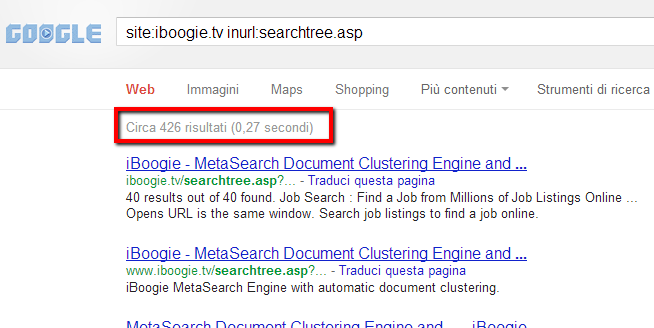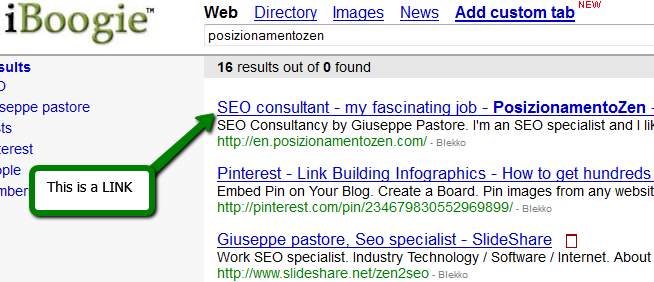
Getting links by crystalizing those virtually existing ones
If you read this blog, you probably know I don’t write frequently as I’m strongly convinced it’s better to post less and say something (hopefully) interesting that to regurgitate concepts already covered by others better than me.
So, when I decide it’s passed too much time since my last post, I force myself to think to something different to write about.
Last month I challenged myself (and not only) to find a kind of link that’s not on Jon Cooper’s Link Building strategies list.
#SEO Challenge: finding a link type that’s not in @pointblankseo‘s link building strategies list (I’ll accept rewards in case I find one).
— Giuseppe Pastore (@Zen2Seo) Dicembre 13, 2012
If you know that monster piece, you should understand is not that easy to win the bet. And I admit I’ve had a hard time trying to find the right key to approach the problem. I didn’t want to focus on a different way to get a link. I wanted to write of a different type of link, and this was even more difficult to achieve. I blamed myself after a week I hadn’t found anything.
Then I started re-thinking about the entire concept of link.
What’s a link
According to W3C’s introduction to Links:
A link is a connection from one Web resource to another.
While this is quite obvious to everyone, SEO’s tend to think a link is only an <A> element declaring a not redirected (or 301 redirected) href value and possibily without a nofollow value for the rel attribute, put from someone on a resource.
For ranking purposes this is almost true, but this way of thinking to links lead to a partial blindness since one starts to automatically pass by possible opportunities.
Do some exist? Maybe yes…
Link building approaches
The state of mind I’ve just described, that’s the belief a link derives from someone including an <A> element in a document, makes link builders move around two macro-strategies:
- Creating links by oneselves, that basically means adding a link wherever it’s possible (comments, guestbooks, profiles, and so on).
- Attracting links, that basically means obtaining a link from someone else with every possible mean you can think of.
Most of the SEO’s would say there aren’t other possibilities.
Well, I think this isn’t correct…
Crystalizing volatile links
If you free your mind from your idea of what a link is, you could see links aren’t only the result of creation or attraction. Sometimes links exist virtually as they only need someone asking for them to be activated.
This happens everytime one searches for something using a search form.

Isn’t that a link, according to W3C’s definition? Of course it is.
Now, I know you’re going to tell me that link is completely unuseful for link building and I can’t disagree.
But the point is… yes, that particular link is unuseful. No, that kind of links aren’t all made the same way.
Search Engines are very different one from another…
… even if they all have the same purposes…

In particular, there are a class of them that’s usually referred to as MetaSearch Engines. In very simple words, they are search tools that collect results from several other search engines and report them to the user altogether. Many of them exist since the 90’s and are pretty arcaic both in their aspect and functionalities. Also when coming to SEO…

Can you read it? 400+ results pages in Google index. Does this sound interesting to you? To me, it does.
So, let’s investigate a bit more on this obscure iBoogie.tv’s result pages.

That is a link. And if I ask you now: “does it count for rankings?” will you answer be quick and straight as before?

Look at the code of the page. No javascript, direct link, no nofollow, relevant anchor text… on a page that can be crawled.
If I wanted that link helping (maybe) my rankings all I’d need to do would be letting Google know that this URL exists, crystalize my new link.
To have this done, there are a bunch of ways and I don’t want to write that much on this, since if you have ever read any blackhat forum you should know the quickest and dirtiest ones and if not we can summarize in: link somehow to that URL and the spiders will come.
Conclusions
Don’t tell me this kind of link is a crappy one. I know. But remember that I wanted to force myself to think to something different and I’ve achieved my goal. The important point here is that, as I already did with tag Title reverse engineering, I’ve obtained my result going back to the basics.
Master the basis before thinking to the advanced stuff, and look at the essence of things without preconcepts. This way you might do things other don’t.